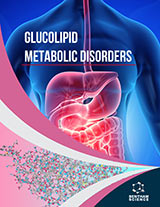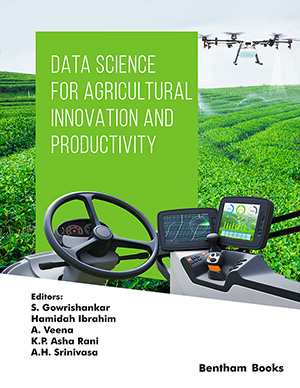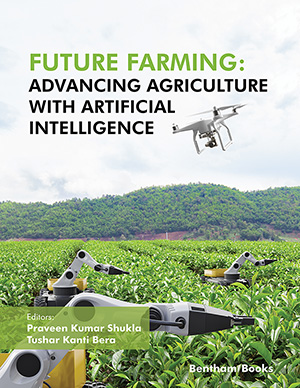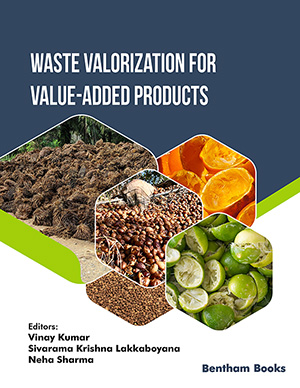Abstract
Background: People have been using different plants to treat a wide variety of illnesses ever since the dawn of human civilisation, medicinal plants have been employed. According to the World Health Organization, approximately 80% of people living in developing countries lack the financial means to purchase synthetic drugs. As a result, these individuals turn to traditional medicines, the majority of which are derived from plants, to satisfy their fundamental requirements for health care. Plants have been used as medicine from the beginning of time to cure a broad variety of ailments, including gastrointestinal disorders, genitourinary problems, hepatobiliary discomfort, as well as psychiatric and respiratory issues.
Methods: In order to get the necessary data, the procedure involves scouring multiple search engines, such as PubMed, ScienceDirect, and Sci Finder, for citations that pertain to the topic at hand. Regarding anti-inflammatories, anti-pyretic, analgesics, and antioxidants.
Results: For a considerable amount of time, many different plants have been used as a treatment for fever, and recent scientific research has demonstrated that these treatments reduce the temperature of the human body. The significance of medicinal plants as a kind of treatment for fever is brought into sharp focus by this analysis.
Conclusion: This review can also assist researchers and scientists in locating new antioxidants, antipyretic compounds, and plants that have been utilized for a considerable amount of time.
Keywords: Antipyretic, Medicinal plants, Antioxidant, Anti-inflammatory, Analgesics, Treatment.
[http://dx.doi.org/10.1016/j.lfs.2005.09.012] [PMID: 16198377]
[http://dx.doi.org/10.1007/BF01630479] [PMID: 7664022]
[http://dx.doi.org/10.5897/AJB2007.000-2457]
[http://dx.doi.org/10.1016/S0006-2952(02)01621-0] [PMID: 12628491]
[http://dx.doi.org/10.1007/BF02980029] [PMID: 14609132]
[http://dx.doi.org/10.1084/jem.169.5.1543] [PMID: 2497225]
[http://dx.doi.org/10.1016/0952-7915(91)90079-G] [PMID: 1711326]
[http://dx.doi.org/10.1146/annurev.immunol.15.1.323] [PMID: 9143691]
[PMID: 14726604]
[http://dx.doi.org/10.1016/j.lfs.2005.04.051] [PMID: 16137700]
[http://dx.doi.org/10.1016/j.foodchem.2009.04.123]
[http://dx.doi.org/10.1016/j.jep.2007.01.036] [PMID: 17395412]
[http://dx.doi.org/10.1016/0378-8741(87)90125-5] [PMID: 3501819]
[http://dx.doi.org/10.4103/0973-1296.157743] [PMID: 26109769]
[http://dx.doi.org/10.1007/s13197-020-04417-2] [PMID: 32903995]
[http://dx.doi.org/10.1155/2016/7382506] [PMID: 27034694]
[http://dx.doi.org/10.1016/j.fitote.2019.02.006] [PMID: 30738093]
[http://dx.doi.org/10.3889/oamjms.2020.4809]
[http://dx.doi.org/10.4172/1948-593X.S12-007]
[http://dx.doi.org/10.1016/j.biopha.2018.08.160] [PMID: 30236850]
[http://dx.doi.org/10.31018/jans.v3i1.158]
[http://dx.doi.org/10.9734/JOCAMR/2018/40002]
[http://dx.doi.org/10.1186/s12906-015-0728-y] [PMID: 26100408]
[http://dx.doi.org/10.25258/ijcprr.v8i03.9215]
[http://dx.doi.org/10.1007/s12272-009-1902-x] [PMID: 19784573]
[http://dx.doi.org/10.1515/jbcpp-2014-0051] [PMID: 25153591]
[http://dx.doi.org/10.15680/IJIRSET.2014.0308016]
[http://dx.doi.org/10.1002/ptr.2701] [PMID: 19142986]
[http://dx.doi.org/10.1080/08923970600626007] [PMID: 16684672]
[http://dx.doi.org/10.1016/j.bcab.2015.08.016]
[http://dx.doi.org/10.1007/s12041-012-0137-7] [PMID: 22546832]
[PMID: 22557438]
[http://dx.doi.org/10.7860/JCDR/2014/9207.4671] [PMID: 25302211]
[http://dx.doi.org/10.4103/0974-8520.77162] [PMID: 22131741]
[http://dx.doi.org/10.4103/0974-8520.141958] [PMID: 25364210]
[http://dx.doi.org/10.4103/0975-7406.155791] [PMID: 25709336]
[http://dx.doi.org/10.1186/1746-4269-2-27] [PMID: 16749924]
[http://dx.doi.org/10.1371/journal.pone.0167812] [PMID: 28033424]
[http://dx.doi.org/10.1248/bpb.32.2029] [PMID: 19952423]
[http://dx.doi.org/10.1016/S0301-0082(98)00037-9] [PMID: 9760702]
[http://dx.doi.org/10.1177/1934578X1801301134]
[http://dx.doi.org/10.1201/b16504]
[http://dx.doi.org/10.1007/978-0-387-70638-2]
[http://dx.doi.org/10.1016/B978-0-12-809286-6.00030-3]
[http://dx.doi.org/10.5897/JMPR11.787]
[http://dx.doi.org/10.1016/0378-8741(89)90085-8] [PMID: 2615416]
[http://dx.doi.org/10.1016/j.foodchem.2006.06.023]
[http://dx.doi.org/10.20402/ajbc.2020.0106]
[http://dx.doi.org/10.1155/2014/808302] [PMID: 24949473]
[http://dx.doi.org/10.1055/s-0028-1097830] [PMID: 1178789]
[http://dx.doi.org/10.1016/S0378-8741(00)00178-1] [PMID: 10904173]
[http://dx.doi.org/10.1007/s13596-012-0081-3]
[PMID: 15511002]
[http://dx.doi.org/10.1002/ptr.4788] [PMID: 22887725]
[http://dx.doi.org/10.1080/09709274.2003.11905616]
[http://dx.doi.org/10.1016/j.jep.2005.05.039] [PMID: 16081231]
[http://dx.doi.org/10.1016/S0378-8741(03)00119-3] [PMID: 12860306]
[http://dx.doi.org/10.1078/0944-7113-00104] [PMID: 11995949]
[http://dx.doi.org/10.1201/9781420009071]
[http://dx.doi.org/10.1016/j.jep.2021.113990] [PMID: 33689798]
[http://dx.doi.org/10.1016/j.jep.2015.07.039] [PMID: 26231448]
[http://dx.doi.org/10.1155/2012/578497] [PMID: 22888365]
[http://dx.doi.org/10.18203/2319-2003.ijbcp20150015]
[http://dx.doi.org/10.5897/AJPP2013.3719]
[PMID: 10641181]
[http://dx.doi.org/10.1016/0378-8741(87)90042-0] [PMID: 3613609]
[http://dx.doi.org/10.1080/13880200600596302]
[http://dx.doi.org/10.22271/phyto.2021.v10.i3d.14093]
[http://dx.doi.org/10.1016/j.hermed.2020.100358]
[http://dx.doi.org/10.1055/s-0042-106304] [PMID: 27163229]
[http://dx.doi.org/10.1016/j.fct.2010.11.009] [PMID: 21081148]
[http://dx.doi.org/10.4103/0250-474X.117438] [PMID: 24082348]
[http://dx.doi.org/10.1016/S2221-1691(12)60065-3] [PMID: 23569939]
[http://dx.doi.org/10.31254/phyto.2016.5106]
[http://dx.doi.org/10.3109/13880209.2014.923005] [PMID: 25471295]
[PMID: 12426952]
[http://dx.doi.org/10.3389/fphar.2022.903171] [PMID: 35814234]
[http://dx.doi.org/10.4236/fns.2012.39170]
[http://dx.doi.org/10.1556/AAlim.2007.0029]
[PMID: 9244565]
[http://dx.doi.org/10.21203/rs.3.rs-845749/v1]
[http://dx.doi.org/10.12944/CRNFSJ.10.2.9]
[http://dx.doi.org/10.3390/ijms141121489] [PMID: 24177568]































